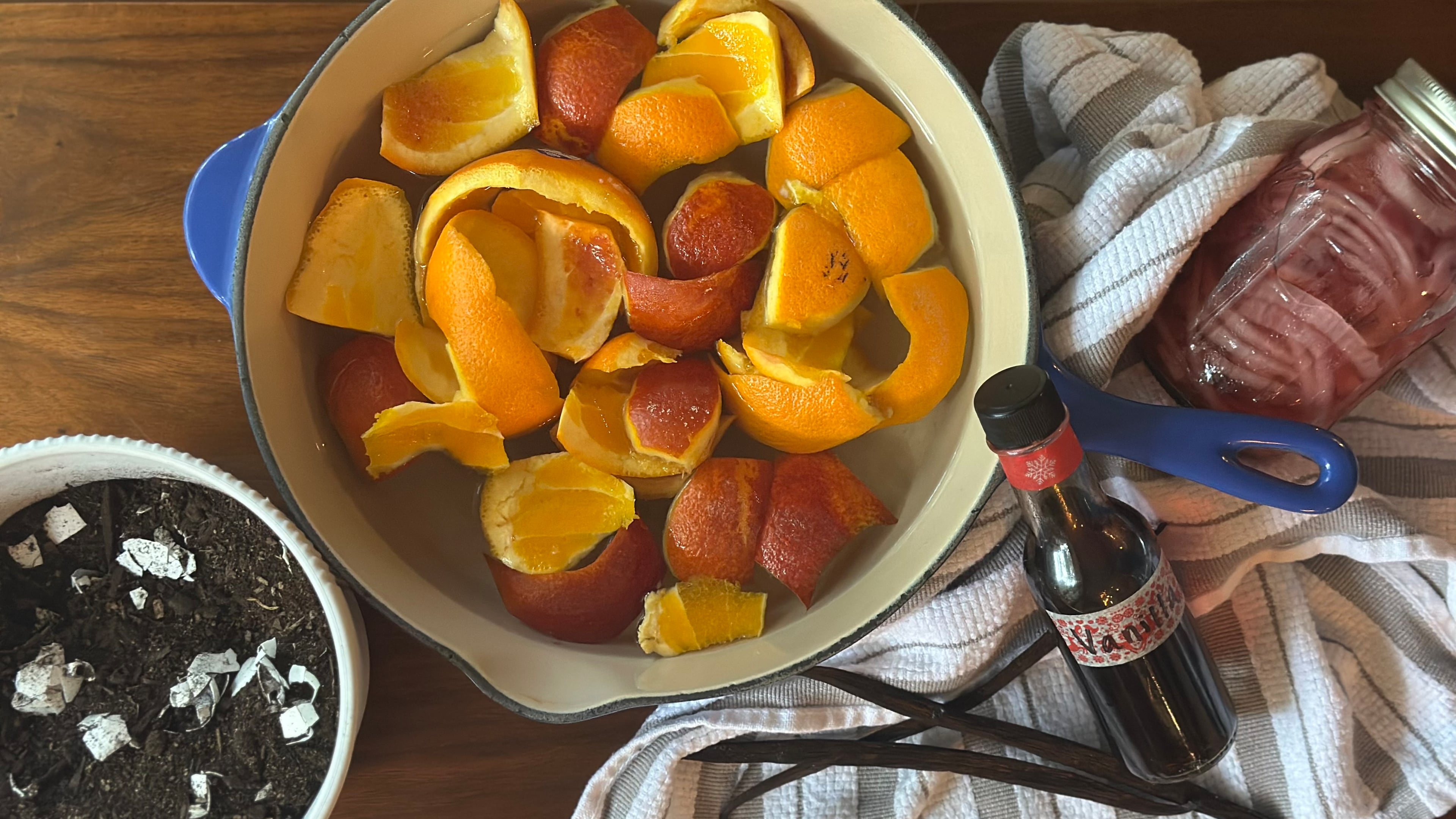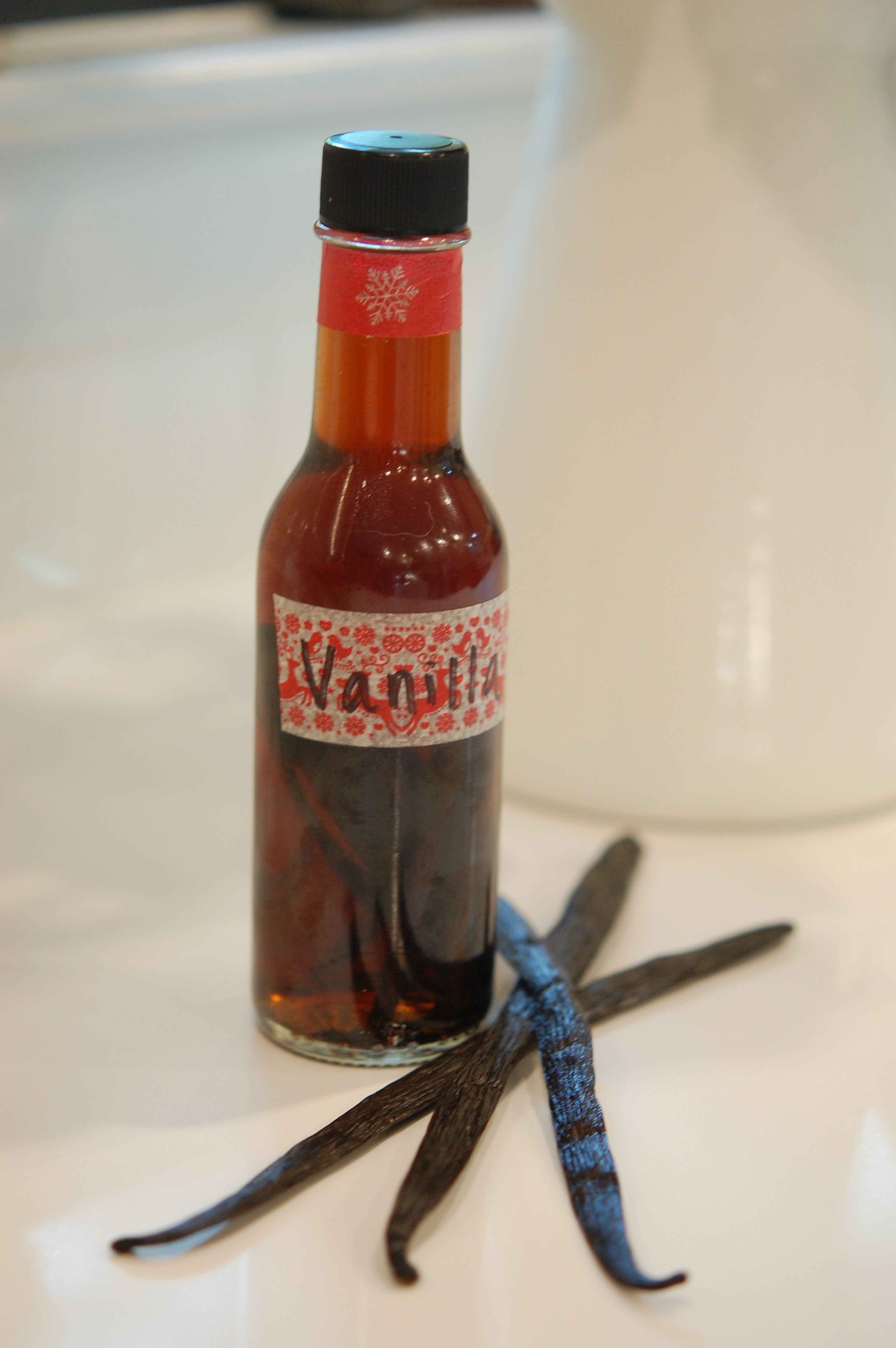That’s not trash! Kitchen waste can be treasure.

I have a not-so-secret obsession with Patrick Vernuccio, aka The Frenchie Gardener (@thefrenchiegardener). In addition to his delicious French accent and boy-next-door good looks, he inspires 1.2 million Instagram followers to live better through organic gardening, including composting. He also shares a lot of ideas for reusing kitchen waste, which is what made me a fan.
Composting is an excellent way to use kitchen scraps. It helps combat climate change by reducing the amount of garbage that otherwise ends up in landfills, lowering the amount of greenhouse gases emitted into the atmosphere. According to the EPA, composting builds healthier soil, which prevents soil erosion, conserves water and improves plant growth.
There are other fun, creative ways to reuse your scraps before they head to the compost bin. Not only is reusing food scraps better for the environment, it saves money, too. Here are some tips on reusing:
Vegetable scraps
Perhaps the easiest (and most classically French!) way to reuse vegetable scraps is to create vegetable stock with them. You’ll never buy grocery store stock again. Unless you’re working with scraps the size of a Thanksgiving feast, it can take a family just a minute or two to amass enough veggie scraps to make a stock from one meal.
Collect your scraps in a plastic bag — or even better, a reusable vegetable bag — in the freezer for up to 2 months. Place all your veggies in a large Dutch oven, cover with water, and add seasonings such as salt, pepper and herbs. Bring to a boil, reduce the heat and simmer on low for at least 1 hour, or all afternoon for a deeper flavor. Keep an eye on the water level if you allow the stock to reduce for a long period, and add more if needed. Place a colander in a large bowl and strain the veggies from the stock. The strained veggies can go in your compost pile.
You’ll make about 2 quarts of stock, depending on how much water you add and how much you reduce the stock. The stock can be frozen for up to 3 months for use in soups, stews and other recipes. What veggies can you use? Onion scraps (including the peels), wilting carrots and carrot tops, wilting celery, tomato cores, cauliflower and broccoli stems.
Eggshells
No need to throw out those eggshells or send them down your garbage disposal (which your plumber will tell you is a big no-no, anyway). Instead, rinse them after use and let them dry. Crush them with a rolling pin or grind them in a coffee grinder or blender to use in your garden. Larger pieces of shell will deter snails, ants and other bugs when placed at the base of your plants. Powdered eggshells can be added to soil for a quick-release calcium boost, which is especially beneficial to tomato and pepper plants.
You can also use half shells to plant seedlings. Place the half shells in an egg carton and fill with soil and seeds. Once the seeds sprout, plant them — shell and all — in your garden or give the carton away as a cute and useful gift to a fellow garden lover.
Pickle brine
Save your grocery store pickle brine! You can use brine to pep up coleslaw, potato salad or to replace the vinegar in a marinade. You can also make quick pickles: Slice the vegetables you’d like to pickle into spears or slices and toss with a small amount of salt to draw the water out for about 20 minutes. Place the veggies in a colander, rinse and drain. Prepare the leftover brine (pickle juice) by bringing it to a boil in an appropriately sized pot, adding pickling spices or fresh herbs if desired. Distribute the sliced veggies evenly among clean jars and cover with the hot brine. Allow the brine to come to room temperature, secure the jar lids and refrigerate your quick pickles for at least 24 hours before serving. Store your pickles in the fridge and don’t reuse brine more than once.

Vanilla Beans
If you’re like me, you love to use vanilla beans in your baking. But once the beans have been scraped from their pods, there’s still inner pulp to use — don’t waste it! Place the bean pods in a clean jar or bottle and cover them with inexpensive vodka. The alcohol will extract the flavor from the bean pods over time. Give your bean pods at least 2 months to create an extract (the color of the liquid will darken — the darker it is, the more flavorful). You can keep adding beans to the same bottle or get several bottles and create more than one batch. I love to give homemade vanilla extract as gifts for the bakers in my life.
Citrus peels
Citrus peels are perfect for creating simple syrups for baking and cocktails, so don’t toss them — unless you want to send a few down your garbage disposal to freshen it. For a simple syrup, combine equal parts granulated sugar and water with any amount of leftover peels. Bring to a boil, then reduce to a simmer and cook for 1 minute, just until the sugar dissolves. Remove from the heat and strain out the peels. Store the simple syrup in a jar in your refrigerator for up to 3 months.
Another great hack is to finely chop (or grate) the peel and place it in ice trays, along with any fresh herbs if desired. Cover with water and freeze to create yummy and pretty ice bombs of flavor for drinks.
Coffee grounds
Mosquito spraying doesn’t just kill mosquitoes; it kills important pollinators and beneficial bugs in your yard. Protect them by drying your used coffee grounds and rid your deck or patio of mosquitoes the natural way. Place used coffee grounds on a shallow tray and dry on low heat (200 degrees) in the oven for about 2 hours, until they are dry to the touch. You can also dry the grounds over time, adding as you go, by simply spreading them on a shallow tray and letting them dry in the sun.
To use, mix dried coffee grounds with a small amount of pine straw or dried leaves, which help light the grounds. Place the coffee mix in flame-proof containers, such as used candle holders or empty aluminum cans, around your deck or patio. Light the mix and let it burn until it burns away — the smoke will deter mosquitoes. Make a big batch of the coffee grounds mixture and keep it with your gardening soils in a water-resistant container to have on hand any time you need a break from the bites.
Mozzarella brine
Instead of draining away your fresh mozzarella brine, add it to pasta water or soups for an extra kick of salt. Or, mix 1 part of the brine with 6 parts water and spray house and garden plants to control powdery mildew. Use the diluted brine to water tomatoes and other acid-lovers — it lowers the pH and provides nutrients.
Dive deeper into zero-waste solutions
Looking for more great ways to reuse what’s leftover in your kitchen? In addition to The Frenchie Gardener, take advice from food writer Anne-Marie Bonneau, author of “The Zero Waste Chef: Plant-Forward Recipes for a Sustainable Kitchen and Planet” (Avery, 2021). You’ll find more from her on Instagram (@zerowastechef) and at zerowaste.com.
In the 2017 documentary, “Wasted! The Story of Food Waste,” chefs Anthony Bourdain, Massimo Bottura, Dan Barber and others show how to create delicious dishes using table scraps. It can be streamed on several platforms, including Apple TV, YouTube and Amazon Prime Video. Finally, if you haven’t read Michael Pollan’s work yet — do. Any of his books will guide you, but if you’re looking for quick(er) tips on eating and reducing waste, start with “Food Rules: An Eater’s Manual” (Penguin Books, 2009).

